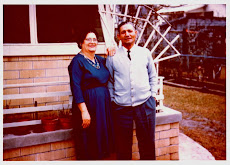 e weddings. Not just for the romance and free booze, but because, if I get invited to the right wedding, I'll be able to gorge myself on hrstule. Believe me, it's well worth springing for that stem of Waterford.
e weddings. Not just for the romance and free booze, but because, if I get invited to the right wedding, I'll be able to gorge myself on hrstule. Believe me, it's well worth springing for that stem of Waterford.Hrstule, or bow ties as they are commonly called here, are one of the more well-known Croatian pastries. Dough flavored with whiskey and anise oil or essence of anise, is rolled thin, cut in strips, tied in loose knots, fried and dusted with powdered sugar. They are commonly served at weddings, but also at Christmas. Hands-down, they are my favorite of all the Croatian pastries, even more beloved by me than pusharates.
Yet, sadly, they are the one delicacy from my childhood that I have failed to master. And God knows I have tried. My dough is always too sticky, too dry, too thin, not thin enough, with too much anise, or not enough anise flavor. Etc., etc., etc.
I even tried making them in the presence of my mother, who made excellent hrstule, in the hopes that her skill would transfer to me by osmosis. Didn't quite work out that way. What started out as a heartwarming mother-daughter-making-memories-in-the-kitchen episode turned into another classic mother-daughter moment. The kind that starts out with gentle suggestions and winds up in slammed doors and dough in the trash.
It's not that I don't have a good recipe. I do. The best - my nona's - which countless generations of Kovacevic, Rosetti and Soljan women have used successfully.
It's not that I'm not "book smart" about the process. I know for instance:
The dough has to be really, really thin ( like 1/16 of an inch) in order to crisp properly.
To get the proper anise flavor you need real oil or essence of anise, not extract. You used to be able to get this from your friendly neighborhood pharmacist, but except for a few old-time drug stores that's getting hard to find. I bought my last bottle at the Mediterranean Bakery in Alexandria, Va.
Bow ties will keep for AGES if stored in an airtight can. And the flavor does improve with age.
If making bow ties with other pastries, store separately from the others, especially those with fillings as these will cause the bow ties to lose their crispness.
So there you have it. If you have better success with them than I do, don't call to gloat, just send me a tin of them.
And if you plan on getting married any time soon, be sure to invite me. You don't have to toss me the bouquet. Just throw me the bow ties.
Hrstule (Bow Ties)
Cream well:
4 eggs
4 stirring spoons (not measuring spoons) sugar (approximately 1 cup)
Add
1 stick of butter, melted and cooled.
2 Tbsp. whiskey or brandy
1 Tbsp. lemon extract
1 Tbsp. vanilla
2 Tbsp essence of anise
Blend well, then add:
4 cups plain all purpose flour
1 tsp. baking powder
Knead well. May take a little more flour, amount depends on the size of eggs and the amount of flavorings used. Vary flavorings to suit taste. After kneading, roll out thin and cut into strips about 3/4 inch wide and 8 inches long. tie strips into loose bow knots. Let bow knots dry out by placing them on waxed paper. Spread on the table. Fry in deep oil at 375 degrees. These cook fast so watch and keep them from browning. Turn one time and remove from hot oil. They take on color while draining. Cool and dust with powdered sugar.
Photo: Mike and Mary on their wedding day, 1925.










